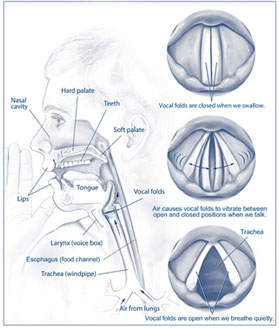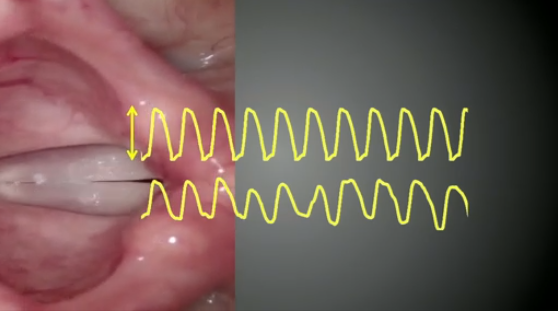
Guilherme Pecoraro –guifono@hotmail.com
Center for Voice Studies, Sao Paulo, Brazil
Otolaryngology: University of São Paulo Medical School, Sao Paulo, Brazil
Daniella Curcio –daniellacurcio@hotmail.com
Center for Voice Studies, Sao Paulo, Brazil
Department of Morphology, Santa Casa School of Medical Sciences of São Paulo, São Paulo, Brazil
Mara Behlau –mbehlau@uol.com.br
Center for Voice Studies, Sao Paulo, Brazil
Federal University of Sao Paulo, Brazil
Popular version of paper 2aMU8
Presented Tuesday morning, June 4, 2013
ICA 2013 Montreal
Vibrato is a rich stylistic element in singing voice and has drawn the attention of voice acoustic researchers in recent years. It's characterized by a number of acoustic and physiological features that may vary according to cultural tradition and musical context.
Acoustically, the vibrato corresponds to a periodical sinusoid modulation of the fundamental frequency produced by vocal cords and is perceived as a regular oscillation in the pitch of a sustained emission.

Figure 1: Vocal tract
It may be measured in terms of the number of modulation cycles per second, which is the vibrato rate (Hertz). The mean vibrato rate values usually range from 4 to 7 Hz.

Figure 2: Vocal folds (vibrato)
The vibrato extent is defined as the average range of frequency variation in the cycles (Hertz) and this parameter may vary with age and characterize some neurological diseases (Ex. Parkinson Disease). Variations in loudness (dB) also may indicate neurological conditions, but in popular singing, for example, they may be used as an interesting stylistic feature.

Figure 3: Measuring the vibrato
Video 1: Pavarotti vibrato
Video 2: Sertanejo vibrato
The vibrato onset is known as the delay (ms) from the phonation onset to the first vibrato cycle and is remarkably important in some styles of singing, as we can observe in this interpretation of a baroque aria.
Video 3: Barroque vibrato
Vibrato has been considered as a remarkable sign of good vocal quality, very useful for singers to bring out their voices from its musical background. Certain characteristics of the vibrato, such as steadiness in periodicity, are signs of good vocal quality and allow for untrained listener to perceptually identify professionals from untrained amateurs, young from senile singers, pathological from healthy voices.
Variability in vibrato acoustic parameters is still an issue of controversy in the literature and has being investigated in terms of pitch and loudness, duration of sustained emissions, music style, vocal technique and senility.
We selected five singers to each music style, considering artistic relevance and representativity. In the Brazilian country style we analyzed the first voice of the duo, which is the one with the highest pitch, performing the main melodic line and analyzed 423 sustained emissions in vibrato using the computer program GRAM.
PowerPoint Presentation: Includes slides with spectrograms of different singers.
You may listen to each audio clip below:
Mario Del Monaco
Giuseppe Di Stefano
Alfredo Kraus
Luciano Pavarotti
Placido Domingo
Jeff Scott Soto
Andre Matos
Bruce Dickinson
Ronnie James Dio
Ian Gillan
Chitaozinho e Xororo
Leandro e Leonardo
Zeze di Camargo e Luciano
Chrystian e Ralf
Gian e Giovanni
Based on our clinical experience with professional singers and our trained perceptual skills to evaluate vocal quality, we believe that rock singers may intentionally control the vibrato rate and use it in a particular way as an interpretative feature, in comparison to opera and Brazilian country singers, even though no intra-subject variation was statistically verified.
On this matter, especially for rock singers, studies with a larger sample size could add significant information, by exploring the variability of other vibrato parameters, besides the vibrato rate, such as vibrato extent and loudness oscillation.
The vibrato rate obtained for opera and Brazilian country singers was equivalent, and both were higher in comparison to rock singers. There was no significant difference in the vibrato rate in what concerns intra subject or intra group variability.

Figure 4: Results: average of the maximum, mean and minimum frequency of the vibrato per group